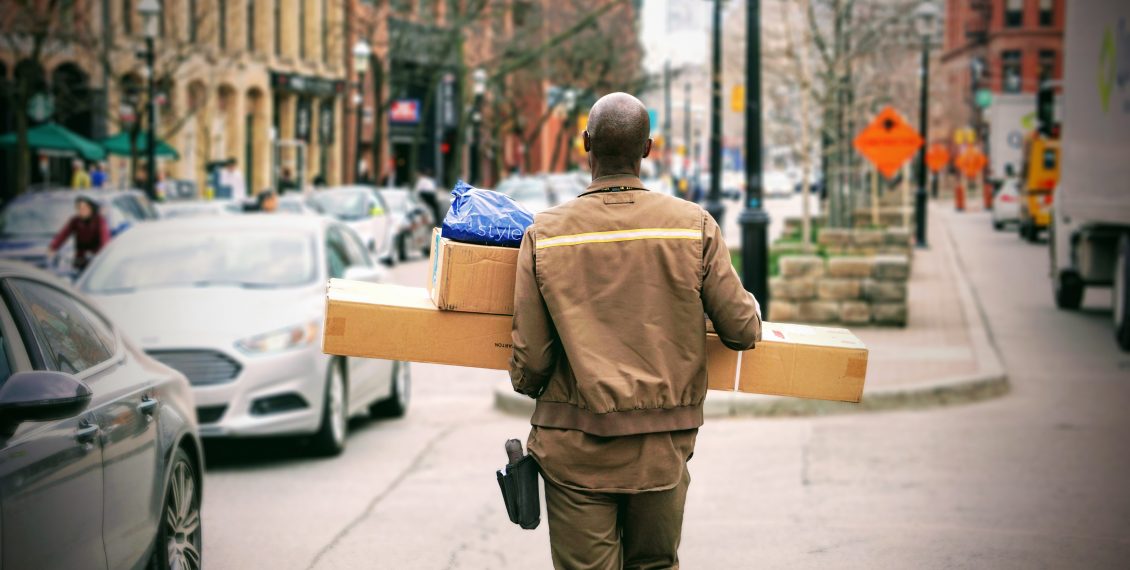Going Green: 5 Ways To Make Your Online Store More Eco-Friendly
By Rodney Laws | Ecommerce

How green is ecommerce? By most accounts, customers who purchase online do less damage to the environment than those who drive their own cars to a bricks-and-mortar store. But being greener than somebody else doesn’t necessarily make you green.
Ecommerce comes with a number of challenges. Managing sustainable packaging and carbon emissions are huge environmental challenges for ecommerce businesses of any size. So, how can you as an ecommerce retailer ensure that your business is as environmentally-friendly as possible?
Here are 5 ways to make your ecommerce business more eco-friendly.
American bricks-and-mortar retailers hand out 228.7 million pounds’ worth of paper receipts every year. If you’re wondering how many trees that is, it’s 3.75 million. When online banking apps can show our full transaction history in a matter of seconds, this enormous waste of resources is almost entirely avoidable.
And ecommerce is part of the problem too. Are you still sending paper copies of receipts and return slips with your orders? The vast majority go in the trash – just like the 11% of all receipts from physical stores that are thrown away immediately.
An online purchase calls for an electronic receipt. You’re already sending order confirmations by email, and for most customers, that’s enough. Why not make your returns slip digital too? Customers who need one can easily print it, and you’ll cut down on your paper waste.
In a recent UK study, 72% of consumers said they think online retailers use too much packaging. Huge boxes for tiny items, plastic mailer bags that aren’t recyclable, mountains of foam peanuts – consumers are becoming increasingly frustrated with poor packaging.
Almost two-thirds of online shoppers say they would have a better opinion of a retailer who made a greater effort to use less packaging. So sustainable packaging choices aren’t just an environmental win, they’re a reputational score too.
Does your packaging have a high recycled-material content? Is it easy for your customers to recycle them again? Do your boxes match the size of your products?
If it’s a no on all counts, find a provider like Fantastapack. They offer fully-customizable packaging, made with responsibly-sourced and widely-recycled materials. Plus, they donate a portion of the proceeds from every order to help fund the planting of new trees.
The final leg of a parcel’s journey from you to the customer is where it goes from a local distribution centre to their front door. This ‘last mile’ (in reality, it’s often much more than that) presents an enormous environmental problem, and the search for a more sustainable system is very much underway.
The recent rapid growth of ecommerce has sent more and more trucks into urban areas, pumping carbon emissions into city centres at unprecedented rates. With this comes increased traffic congestion, more noise pollution, and drastically-reduced air quality.
Low-emission options for this last mile are the solution. Does your courier use electric vehicles or pedal-powered cargo bikes? What about parcel lockers? Could you offer your customers the option to collect their parcel from a secure locker in a convenient location near their home or place of work?
Ecommerce will never be able to compete with in-store retail on one very important front: touch and feel. And this inability to see the product influences the way online shoppers behave — 19% admit to buying multiple versions of the same item, fully intending to return those that aren’t right.
More returns means more trucks on the road. And it’s not just the environment that takes a hit, businesses suffer too: 57% say returns have a negative impact on their day-to-day operations. But here’s the dilemma: consumers frequently cite free and easy returns as a major influence on their decision to buy. So what’s the solution?
It starts with the old sales mantra, ‘The more you tell, the more you sell’. Only in this scenario, it’s about the quality of sales rather than quantity. Detailed product pages create confident customers, helping to reduce both the rate and environmental impact of returns.
So, how’s your photography? Can customers zoom easily? Do you use video? Are you giving a clear picture of the product in use? Do you go into detail about materials, fabric, sizing, care? Ecommerce giant ASOS is leading the way here. Take a leaf out of their book and invest in your product pages so that customers can make fully-informed choices.
Next-day delivery is a sales and marketing dream, a deal-breaker for customers who can’t decide between you and your competitors. But for the environment, it’s all bad news. As is often the case, there’s a price to pay for the convenience.
Data analysis by the University of California, in collaboration with Vox, found that express delivery options don’t just wipe out the eco-benefits of online shopping — they actually create a higher carbon footprint compared with a customer driving to the store.
That’s because the need for speed puts more half-empty trucks on the road, massively reducing their energy-efficiency. The solution has to be education and choice. Customers need eco-friendly delivery options, and they need encouragement to choose them.
Do you offer a ‘green delivery’ option at checkout? Do you tell customers about the environmental cost of next-day delivery? What incentives could you offer to persuade them to choose a slower, more sustainable method?
As concern and activism over the climate crisis grow, the pressure on ecommerce retailers to become more eco-friendly will grow too. Consumers are already showing their frustration with packaging, and concerns around carbon-emissions and transportation will undoubtedly become mainstream too.
As a retailer, you have a great opportunity to educate your customers and influence their behaviour. Making green choices in your supply chain, providing the right information during the purchasing process, and offering green delivery options are a great start.